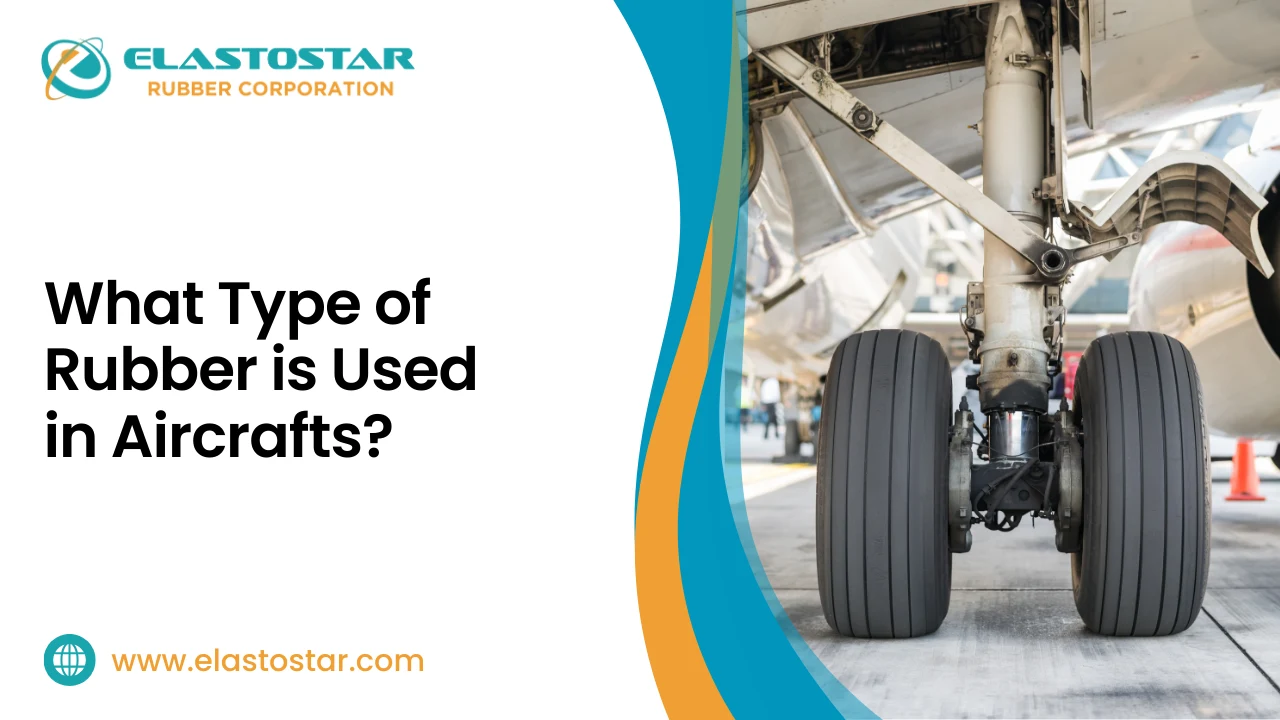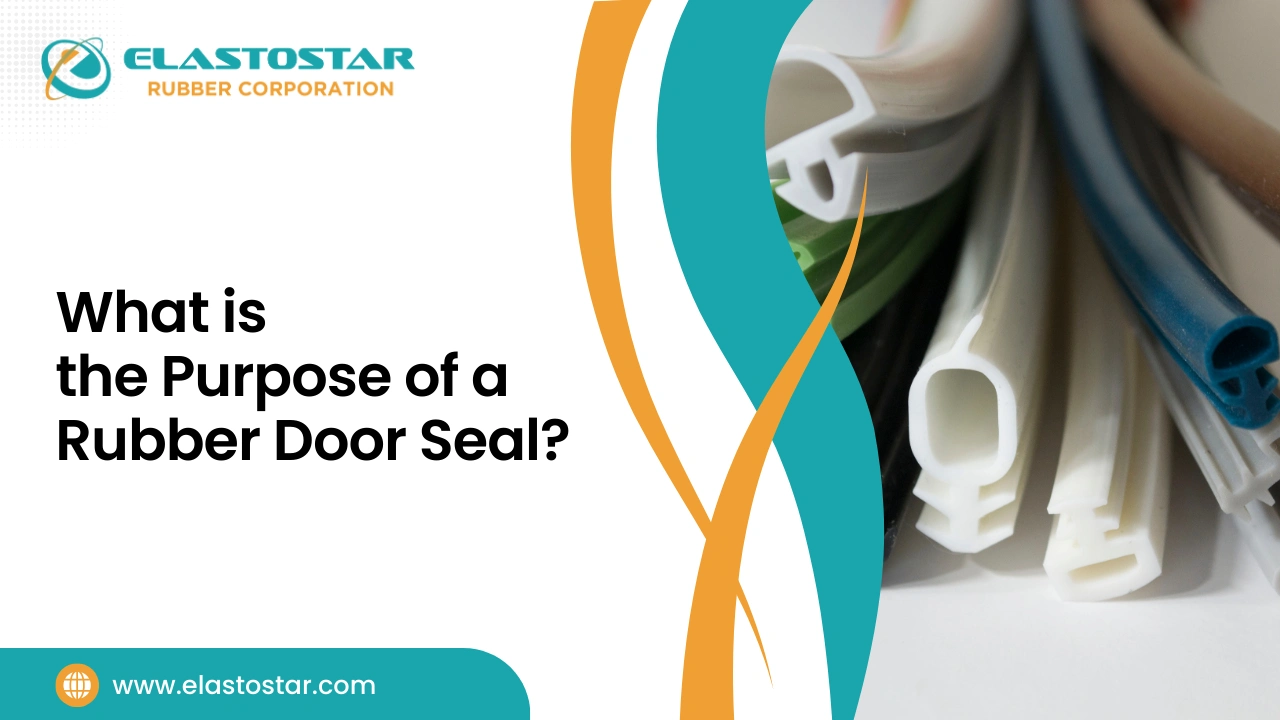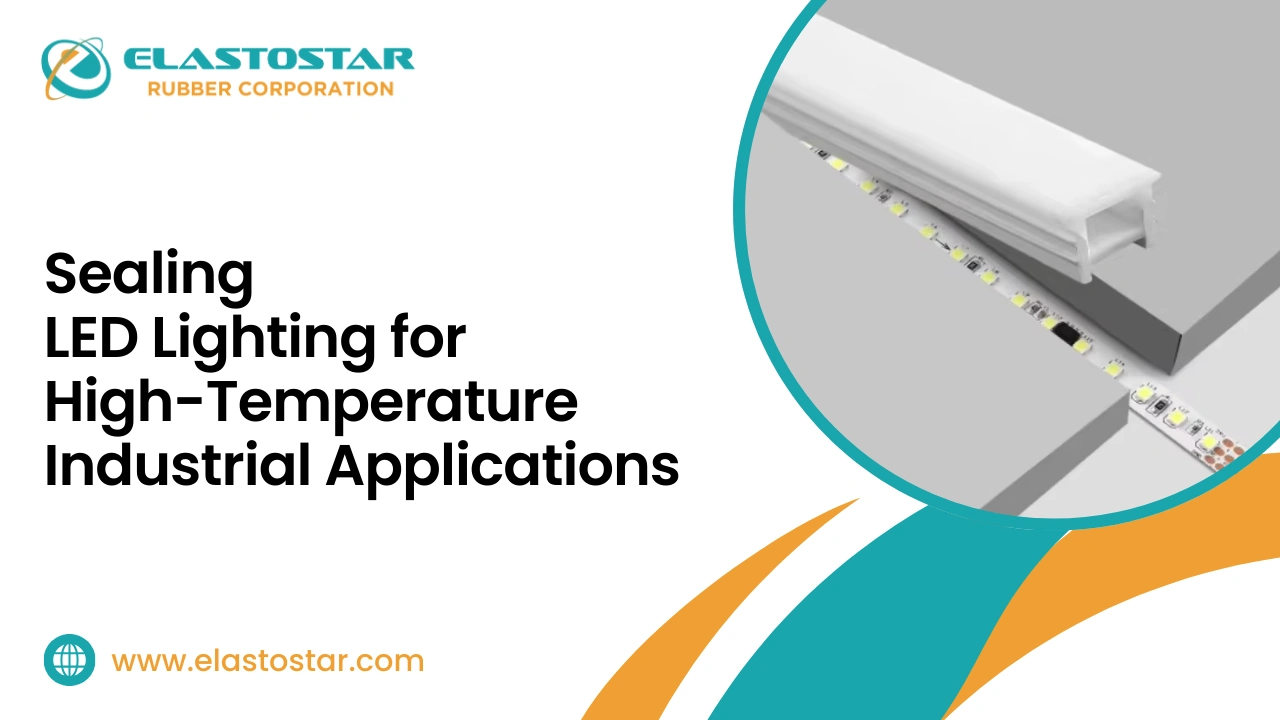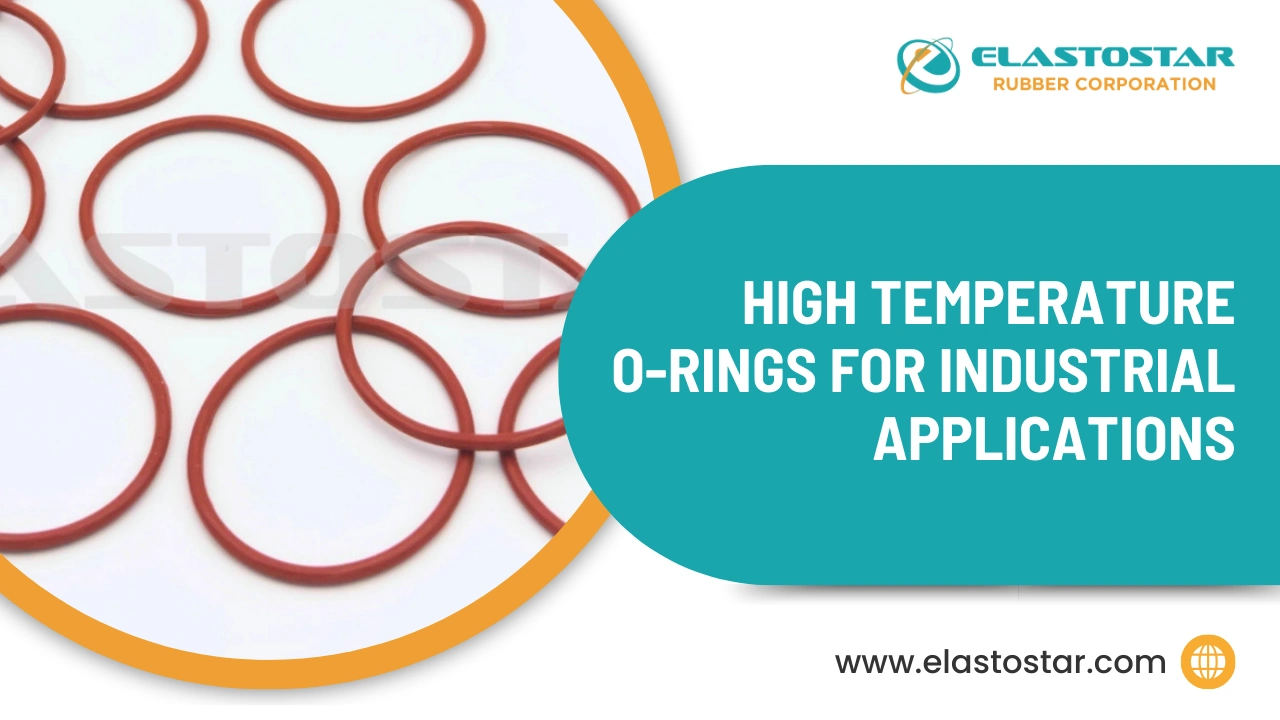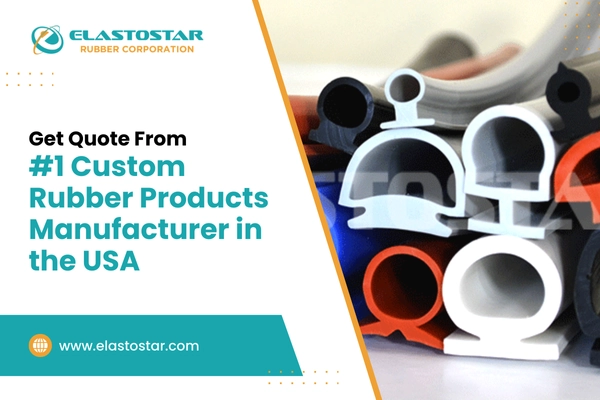Rubber is an important material in the aerospace industry, ensuring safety, efficiency, and reliability in aircraft systems. It is used in seals, gaskets, and insulation to protect critical components from extreme conditions like high temperatures and pressure changes.
Materials like rubber sealing gaskets and rubber seals for windows are crucial for maintaining air tightness and durability during flights. With its flexibility and resistance to harsh environments, rubber is a major component in modern aviation.
In this blog, we will explore the types of rubber used in aircraft, their applications, and why they are important for safe and efficient operations.
Table of Contents
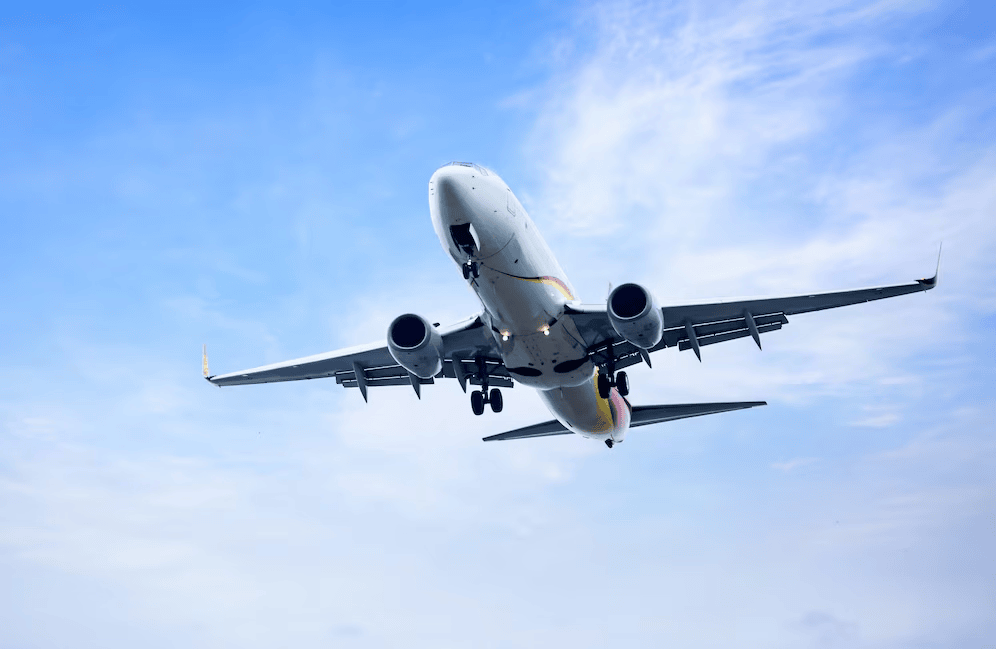
Importance of Rubber in Aircraft Industry
Rubber materials are important in aviation as they help ensure the safe and efficient operation of aircraft systems. With properties like flexibility, durability, and resistance to extreme conditions, rubber is used in many critical applications. For example, rubber window seals maintain air tightness, while door sealing rubber prevents leaks and keeps the cabin secure.
In aviation, aerospace sealing solutions protect vital components from harsh environments, such as high temperatures and pressure changes. Rubber’s ability to perform in challenging conditions makes it a reliable material for modern aircraft.
Read More- The Importance of Silicone Rubber in the Aerospace Industry
What are the Types of Rubber Used in Aircraft?
Rubber plays a critical role in aircraft systems, with different types of rubber offering specific properties that make them ideal for a variety of applications.
Below is a detailed overview of the key types of rubber used in aviation.
1. Silicone Rubber
Silicone rubber is widely used in aerospace due to its high thermal stability and flexibility. It can perform in extreme temperatures, ranging from -60°C to 300°C, without losing its properties. This makes it ideal for components exposed to heat, such as silicone door seals and aircraft gaskets. Silicone rubber is also resistant to UV rays, ozone, and environmental stress, ensuring long-lasting durability in critical systems.
2. Nitrile Rubber (NBR)
Nitrile rubber is valued for its resistance to oils, fuels, and chemicals, which makes it a key material in fuel systems. It is commonly used for rubber t-shaped seals and engine gasket materials. NBR is also known for its strength and ability to maintain a secure seal under pressure, which is essential for ensuring the safe operation of aircraft.
3. Fluoroelastomers (e.g., Viton®)
Fluoroelastomers, such as Viton®, are specifically designed to withstand extreme chemical exposure and high temperatures. These rubbers are used in aviation seals and aircraft sealing applications where resistance to aggressive fuels and lubricants is critical. Their ability to maintain performance in challenging conditions makes them an essential component in fuel systems and hydraulic seals.
4. EPDM Rubber
EPDM rubber is resistant to weather, ozone, and UV rays, making it perfect for window and door seals. It provides reliable sealing in areas exposed to environmental elements, ensuring the interior of the aircraft remains secure and protected. EPDM’s flexibility and long lifespan make it an excellent choice for external sealing applications in aviation.
5. Neoprene Rubber
Neoprene is a versatile rubber used for vibration mounts, gaskets, and shock-absorbing components. It is durable and resists weathering, oil, and heat, ensuring the stability of aircraft structures and minimizing wear on critical systems. Its wide range of applications makes it a staple in aviation.
Why Do These Rubbers Matter in Aviation?
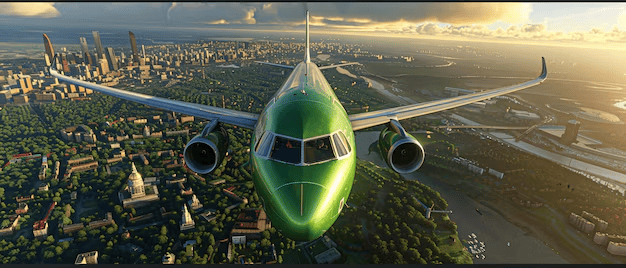
Each of these rubber types is selected for its specific properties that match the demands of modern aircraft systems. Whether it’s sealing components, insulating electronics, or absorbing vibrations, the right rubber ensures safety, performance, and longevity in aviation operations.
What are the Applications of Rubber in Aircraft?
Rubber is used in various critical applications to ensure safety, efficiency, and performance in aircraft systems.
- Sealing Solutions
Rubber provides airtight and fluid-tight seals in critical areas of the aircraft. Rubber seals for doors, and rubber window sealant, ensure a secure and leak-proof environment, preventing air leaks and maintaining pressure. - Thermal and Fire Protection
Rubber materials protect aircraft components from extreme heat and fire hazards. Fireproof gasket material and aircraft gasket sealant are essential in high-temperature areas, such as engines and exhaust systems. - Vibration Dampening and Noise Control
Rubber minimizes vibrations and reduces noise, improving safety and passenger comfort. Aviation seals and aerospace aerodynamic seals absorb mechanical vibrations and create a quieter cabin environment. - Electrical Insulation
Rubber ensures reliable insulation for sensitive components. Silicone sealing rings and rubber to seal windows protect electrical systems from moisture, temperature fluctuations, and environmental damage.
What are the Advantages of Using Rubber in Aircraft?
Rubber is a crucial material in the aerospace industry due to its ability to meet the demanding requirements of aircraft systems.
1. Lightweight
Rubber components are lightweight, which helps reduce the overall weight of the aircraft. This is vital for improving fuel efficiency and enhancing overall performance. Materials like door seals and rubber play a significant role in minimizing weight without compromising on functionality.
2. Durability
Rubber is highly durable and can perform under extreme conditions, such as high altitudes, fluctuating pressures, and temperature changes. For example, rubber seals for windows ensure long-lasting protection and performance, even when exposed to harsh environmental conditions like UV radiation, ozone, and extreme weather.
3. Versatility
Rubber is a versatile material, capable of adapting to a wide range of applications in the aerospace sector. It is used in critical components like aircraft door seals, aerodynamic seals, and other aerospace rubber products. Its flexibility and ability to withstand stress make it ideal for both structural and functional uses.
Rubber’s lightweight nature, durability, and versatility make it an essential material for modern aviation. These qualities not only enhance safety and reliability but also support the efficiency and long-term performance of aircraft systems.
Future Trends in Aerospace Rubber
The aerospace industry is rapidly evolving, and rubber materials are at the forefront of innovation to meet new challenges.
- Development of Advanced Materials
Rubber materials, such as fireproof gasket material, are being improved to provide better heat resistance and reduce overall aircraft weight, enhancing safety and efficiency. - Increased Use of Aerodynamic Seals
As space exploration grows, the demand for aerospace sealing solutions and seal aero parts in spacecraft and next-generation aircraft is increasing. These materials ensure durability in extreme conditions. - Eco-Friendly Solutions
Aviation companies are prioritizing sustainable rubber materials to support environmentally friendly manufacturing and operations, reducing the carbon impact of aviation.
These advancements highlight how rubber will continue to play a critical role in shaping the future of aerospace.
Elastostar Rubber Corporation – Supporting Aerospace
Elastostar Rubber Corporation is known for high-quality rubber manufacturer designed to meet the demanding needs of the aerospace industry. Our range includes rubber window seals, aircraft gaskets, and aviation gaskets, crafted to perform reliably in extreme conditions. As one of the trusted aerospace seal manufacturers, we are committed to meeting stringent industry standards and ensuring safety in every product we deliver.
Our expertise allows us to support aerospace companies with innovative solutions that enhance performance and reliability. At Elastostar, we take pride in being a dependable partner for all your aerospace gasket needs.
Recommended Reads
- Top 10 Properties of Rubber That Make It Ideal for Seals and Gaskets
- What Are the Different Types of Rubber?
- How to Test the Quality of Rubber for critical applications

Conclusion
Rubber plays an important role in modern aircraft, providing flexibility, durability, and resistance to extreme conditions. It is widely used in seals for windows, rubber sealant for windows, and aircraft window seals to maintain air tightness and protect against environmental exposure. These materials are designed to handle high altitudes, pressure changes, and temperature extremes. Rubber ensures safe, reliable, and efficient operations, meeting the stringent demands of the aerospace industry.
FAQs
1. What rubber is used in aircraft?
Aircraft use silicone rubber, nitrile rubber (NBR), fluoroelastomers, EPDM rubber, and neoprene. These materials are chosen for their flexibility, durability, and ability to handle extreme conditions. At Elastostar Rubber Corporation, we provide high-quality rubber components specifically designed for aerospace applications.
2. What material is used in airplane tires?
Airplane tires are made from natural rubber and synthetic rubber compounds like butyl rubber. These materials offer the strength and heat resistance needed to handle heavy loads and high speeds. Contact us to learn more about specialized rubber solutions for aviation.
3. Where is pure rubber used on an aircraft?
Pure rubber is used in seals, gaskets, and vibration dampeners. It’s often combined with synthetic rubbers to improve performance in demanding environments. At Elastostar Rubber Corporation, we supply reliable rubber products that meet the needs of modern aircraft systems.
4. What kind of rubber is used in airplane tires?
Airplane tires use natural and synthetic rubber blends, such as butyl rubber, for durability and to maintain pressure during high-speed operations. Contact us to find out how our rubber solutions support aviation requirements.
5. What is rubber on a plane?
Rubber is used in seals, gaskets, insulation, and vibration mounts on planes. It ensures air tightness, reduces noise, and protects components from environmental factors.
6. What are the three types of rubber?
The three main types of rubber used in aviation are natural rubber, silicone rubber, and nitrile rubber (NBR). Each type is used for specific needs, like insulation, sealing, or durability in aircraft systems.

